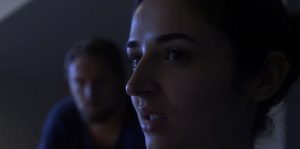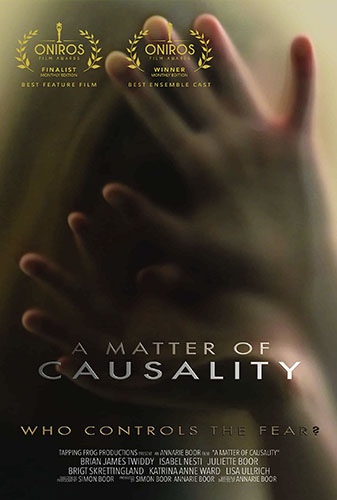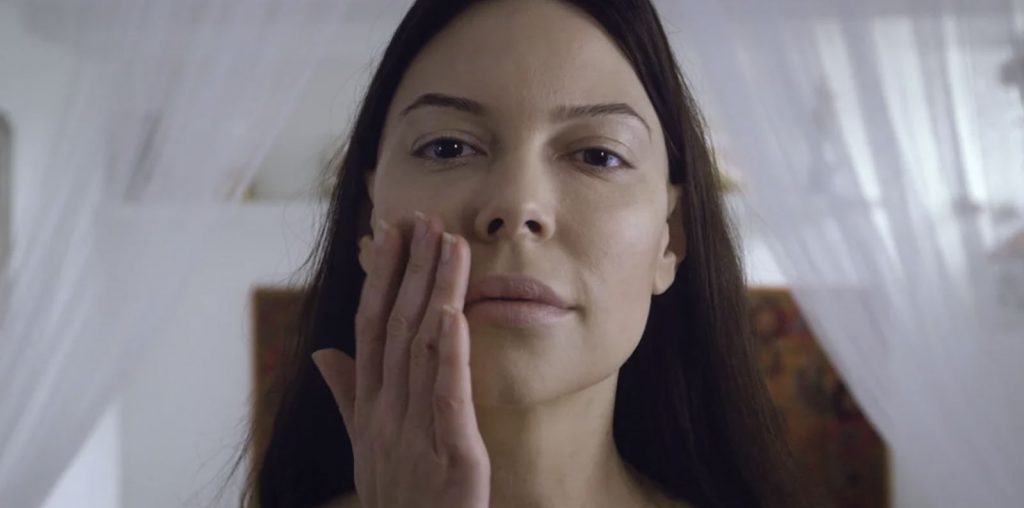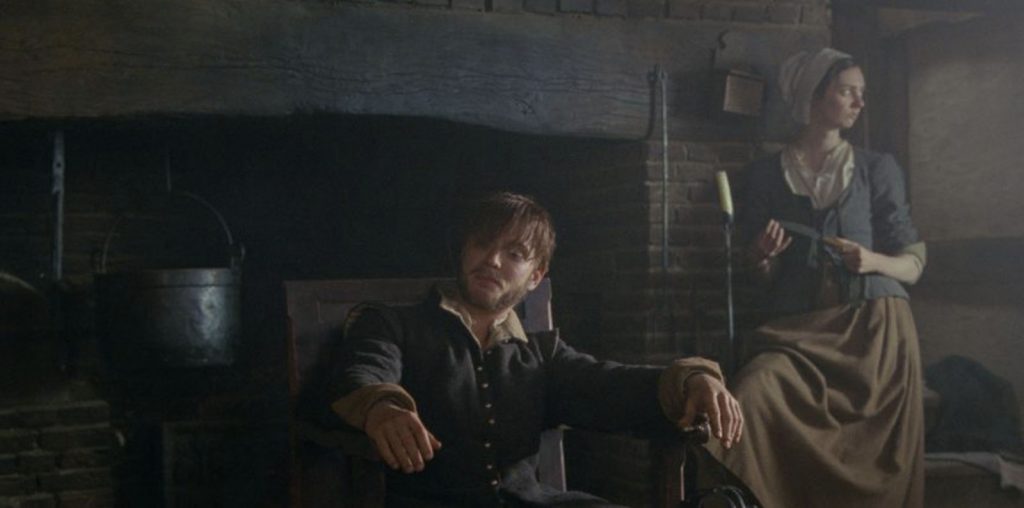
There are two important elements to discuss about A Matter of Causality. The first is that writer/director Boor’s film is an independent sci-fi thriller in every sense of the phrase. Indie sci-fi is challenging to pull off because its production costs are always much higher than indie dramas and comedies. Boor manages to get the most out of what she has available. While the “research lab” is most likely a classroom or office building with the simple placement of props and basic set design, we eventually buy into the supposed high-tech location.
The acting is fine, and indie films, like A Matter of Causality, are a way of giving actors a chance to star and carry a movie as big studios are unwilling to gamble on inexperienced talent. So with Tom Hanks and Meryl Streep out of the picture, Isabel Nesti does a fine job carrying the emotional narrative of the film as the protagonist.
Without millions to spend, nor a vast Hollywood talent pool to draw from, the only thing you have control over is the story and the script. I would describe A Matter of Causality as an extended episode of the Twilight Zone. There’s a mystery to unravel and an ESP puzzle to wrap one’s head around, and a standard moralistic ending. That said, the story isn’t necessarily new. It plays out well but desperately needed to push the dramatic elements toward the extreme to set it apart from the pack.

“There’s a mystery to unravel and an ESP puzzle to wrap one’s head around, and a standard moralistic ending.”
I’ll give one example that I think could have improved the story immensely. The basic theme of the film is causality and that Lai is hyper-perceptive when it comes to sensing and empathizing with the future of others. What the film does right is to establish how Lai can create a psychic link to the students without ever meeting them. However, it would have been more compelling if, rather than torment them with incessant voices and questions in their heads, Lai’s perception of the future of each character was used against them. In a way, have her predict/manipulate the events that lead to their ultimate demise.
It would also be interesting to find ways of allowing the audience to figure out Lai’s secret as the story goes along. Maybe drop more clues about the relationship between Addington and Lai throughout the story.
The biggest weakness of the film is character development. The importance of character development is that you want to create characters that your audience can connect emotionally with. It’s not enough to simply put actors on screen in generic roles. Just because they are placed in danger, that doesn’t mean we’ll automatically sympathize with them and their fate. It’s the difference between observing the behavior of humans while the story plays out versus allowing the audience to walk in their shoes…particularly Digby’s. Give a little back story for Digby at the start. Why is she there? What made her want to be a medical psychologist? What emotionally connects her with Lai’s plight? How can Lai use this backstory against her?
A Matter of Causality is a good launching point for Annarie Boor’s filmmaking career. It’s not perfect, but it’s a step in the right direction for a burgeoning filmmaker’s career, and I can’t wait to see how she evolves with her next feature films.

"…a step in the right direction for a burgeoning filmmaker’s career…"


